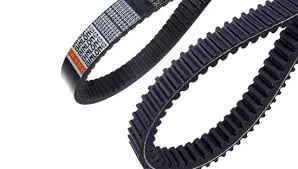- Arabic
- French
- Russian
- Spanish
- Portuguese
- Turkish
- Armenian
- English
- Albanian
- Amharic
- Azerbaijani
- Basque
- Belarusian
- Bengali
- Bosnian
- Bulgarian
- Catalan
- Cebuano
- Corsican
- Croatian
- Czech
- Danish
- Dutch
- Afrikaans
- Esperanto
- Estonian
- Finnish
- Frisian
- Galician
- Georgian
- German
- Greek
- Gujarati
- Haitian Creole
- hausa
- hawaiian
- Hebrew
- Hindi
- Miao
- Hungarian
- Icelandic
- igbo
- Indonesian
- irish
- Italian
- Japanese
- Javanese
- Kannada
- kazakh
- Khmer
- Rwandese
- Korean
- Kurdish
- Kyrgyz
- Lao
- Latin
- Latvian
- Lithuanian
- Luxembourgish
- Macedonian
- Malgashi
- Malay
- Malayalam
- Maltese
- Maori
- Marathi
- Mongolian
- Myanmar
- Nepali
- Norwegian
- Norwegian
- Occitan
- Pashto
- Persian
- Polish
- Punjabi
- Romanian
- Samoan
- Scottish Gaelic
- Serbian
- Sesotho
- Shona
- Sindhi
- Sinhala
- Slovak
- Slovenian
- Somali
- Sundanese
- Swahili
- Swedish
- Tagalog
- Tajik
- Tamil
- Tatar
- Telugu
- Thai
- Turkmen
- Ukrainian
- Urdu
- Uighur
- Uzbek
- Vietnamese
- Welsh
- Bantu
- Yiddish
- Yoruba
- Zulu
Aug . 13, 2024 04:12 Back to list
Choosing the Right V-Belt Pulley for SPC260 Applications in Machinery Systems
Understanding the V-Belt Pulley SPC260 A Key Component in Mechanical Systems
The V-belt pulley SPC260 is a vital component in various mechanical systems, playing a crucial role in power transmission and the effective operation of machinery. Understanding its design, application, and benefits can greatly enhance the efficiency of mechanical processes in industries ranging from manufacturing to automotive.
Design Features
The SPC260 V-belt pulley is characterized by its distinct profile, tailored specifically for use with SPC series V-belts. The ‘SPC’ designation refers to a specific standard size, allowing for compatibility with a range of belt-driven systems. This design maximizes contact between the pulley and the belt, ensuring optimal power transfer, which is critical in high-torque applications.
Crafted from durable materials such as cast iron or aluminum, the SPC260 offers excellent resistance to wear and tear, making it suitable for demanding environments. Its surface finish is typically smooth, reducing friction and heat generation during operation. The pulley’s precise dimensions ensure that it fits seamlessly with associated components, minimizing vibrations and enhancing overall system stability.
Applications
V-belt pulleys, including the SPC260, are used in a multitude of applications. They are commonly found in industrial machinery, where they contribute to the operation of conveyor belts, pumps, compressors, and fans. In the automotive sector, they are instrumental in the functioning of engines, where they help transmit power from the crankshaft to other parts, such as the alternator, water pump, and air conditioning compressor.
The versatility of the SPC260 makes it suitable for both light-duty and heavy-duty applications. Its ability to handle varying speeds and loads allows engineers and technicians to design more efficient systems that meet specific operational requirements.
v-belt pulley spc260

Benefits of Using SPC260 V-Belt Pulleys
One of the significant advantages of utilizing the SPC260 V-belt pulley is its efficiency in power transmission. The close fit and well-defined profile ensure that a substantial amount of power is transferred from the motor to the driven load with minimal loss. This efficiency not only saves energy but also extends the lifespan of both the pulley and the belt.
Moreover, the design of V-belt pulleys helps reduce slippage, a common issue in power transmission systems. With reduced slippage, users can expect smoother operation, lower noise levels, and less wear on both the belt and the pulley. This reliability translates into lower maintenance costs and fewer downtimes, contributing to enhanced productivity in industrial settings.
Installation and Maintenance
Proper installation of the SPC260 V-belt pulley is essential for achieving optimal performance. It is crucial to align the pulleys accurately and ensure the correct tension is applied to the belt. Regular maintenance practices, such as checking for wear, lubricating as needed, and monitoring for any misalignments, can significantly extend the service life of the pulley and the entire system it supports.
Conclusion
In summary, the V-belt pulley SPC260 is an indispensable component in the realm of mechanical power transmission. Its robust design, coupled with its versatility and efficiency, makes it a preferred choice across various industries. By understanding the features and benefits of the SPC260, engineers and technicians can make informed decisions that enhance the performance and reliability of their machinery, ultimately leading to greater operational success. As technology continues to evolve, it will be exciting to see how innovations in designs and materials further enhance the functionality of components like the SPC260.
-
Upgrade Power Steering Pump Belt for Smooth, Quiet Operation
NewsAug.27,2025
-
Precision Timing Belt & Chain: Engine Performance & Durability
NewsAug.26,2025
-
Precision Lathe Drive Belts: Durable & Reliable Performance
NewsAug.25,2025
-
84.5 Serpentine Belt: Durable & Precision Fit for Your Engine
NewsAug.24,2025
-
Premium Ribbed Drive Belts for Quiet Power Transmission
NewsAug.23,2025
-
High-Performance Vehicle Timing Belt for Engine Precision
NewsAug.22,2025

